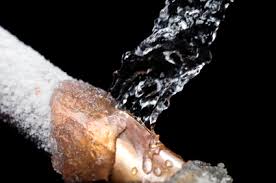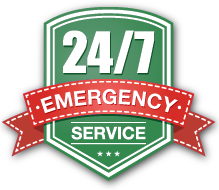
Winterizing Your Home Plumbing
As winter approaches, there are many different ways that you should be preparing your home. From insulating pipes to draining your sprinklers, many other parts of your plumbing system require pre-winter maintenance to function correctly during the cold weather. With this checklist, you can prepare your plumbing for winter and know when to call Albuquerque Plumbing, Heating & Cooling for help.
Fixing Leaks
Does your home have any leaky faucets or pipes? If so, these absolutely must be repaired before the temperature drops. Even the tiniest of water leaks can become a significant issue during winter. Inspect your exposed pipes, indoors and outdoors, as well as faucets in your kitchen, utility room, and bathrooms. All leaks should be fixed during fall to ensure your pipes and faucets are ready for winter.
Insulating Pipes
If you have exposed pipes, these must be insulated before winter to ensure that they do not freeze or burst open. You will probably find exposed pipes in your garage, attic, basement, and crawl space. Any visible pipes should be wrapped with insulating foam. If you have outdoor pipes, these should also be covered. This process is inexpensive and far superior to the costly repairs of damaged pipes during winter. Furthermore, insulating your pipes can help you save on energy costs.
Water Heater
Before the onset of winter, there are several tasks you should perform in regard to your water heater. First, drain your water heater. This should be performed yearly to remove sediment from the tank, which can build up and cause rust, and it is imperative if you have hard water. If you see any potential problems with your water heater, consult with your plumber concerning repair or replacement. Even if you do not suspect an issue, you should still have a water heater inspection performed at least every two years. Any deviation from regular operation or abnormal sounds should be addressed immediately to ensure no unsafe conditions exist.
Swamp Cooler
If your home has a swamp cooler, you will need to drain it before winter. First, turn off the water and the power to the swamp cooler. Next, drain the water from the cooler and the water supply line. You should also clean the inside of the swamp cooler and change the pads. Last, cover your swamp cooler with a water-tight cover to ensure that it stays dry during winter.
Outdoor Hoses, Faucets, & Sprinklers
Your outdoor hoses, faucets, and sprinklers must also be prepared for winter. First, check the faucets for leaks. Then, remove any outdoor hoses you have, as the water inside them can freeze and expand, leading to the pipes and faucets in your home freezing. Drain these hoses before storing them. Next, protect your outside hose bibs by draining collected water and adding insulation.
If your home has shut-off valves for your outdoor faucets, you can close these and completely drain the water from the hose bibs, meaning that you do not need insulation. Finally, if you have a sprinkler system, turn off the water and flush any remaining water. Some systems are self-draining, while others must be purged using blown air.
Pump House
If your home draws water from a well, you will need to prepare the pump house for winter. First, insulate the pump house to ensure the pipes do not freeze. Next, add insulation to any pipes exposed within the pump house. Finally, you should provide the pump house with a heat source to ensure the temperature does not drop below freezing.
Sump Pump and Pit
For those with a sump pump and pit, you must perform further winterization tasks. The first step is a sump pump and pit inspection to ensure your system works properly. Next, clean both the sump pump and the pit. You should also insulate your basement to ensure the sump pump does not freeze. It will no longer function if it does, allowing water to flow into your basement. This can lead to flooding and severe water damage.
Main Water Shutoff Valve
Finally, it is crucial to know where your water main shutoff valve is located. Knowing where your water main shutoff valve is will allow you to quickly turn off the water and reduce the potential for damage if a pipe freezes and bursts. You should also test the water main shutoff valve to ensure it works properly in case of an emergency.
When to Contact Albuquerque Plumbing, Heating & Cooling
While much of the winter preparation for your plumbing system can be done by yourself, there are certain situations in which you should contact Albuquerque Plumbing, Heating & Cooling for help. Find any issues with your plumbing system, such as a rusty water heater, leaky pipes, or a non-functional water main shutoff valve. You should call Albuquerque Plumbing, Heating & Cooling to perform an inspection and repair. In addition, if at any point during the winter months, you encounter a plumbing emergency, such as pipes that have burst or a flooded basement, do not hesitate to contact Albuquerque Plumbing, Heating & Cooling for assistance!
If you’re looking for fast and reliable plumbing and drain cleaning services, then check out our services in the following locations:
- • Albuquerque drain cleaning
- • Bosque Farms drain cleaning
- • Corrales drain cleaning
- • Los Ranchos drain cleaning
- • Placitas drain cleaning
- • Rio Rancho drain cleaning
Check out the 5-star Antioch plumbers with our friends at Service Pros Plumbers in California! Learn more about their services from one of the locations linked below:



